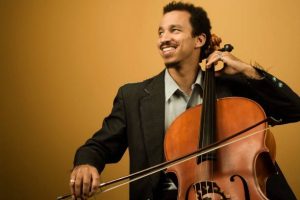In my last article we looked at jazz cello and some of the possibilities for our instrument in this style. First by imitating the sound of a native jazz instrument (double bass) and then expanding the jazz cello’s vocabulary, so to speak, by imitating artists like Fred Katz and Mark Summer. I emphasized a tiered approach to understanding the genre, first with harmonic and then melodic practice. With exposure to many styles, you can build your unique cello sound and learn to make good melodic material up on the fly, in other words you can improvise on the cello easily.
This article will discuss improvisation in two styles: Baroque and Jazz, and advice on how to successfully improvise in a group.
Improvisation isn’t new
In Classical music (specifically from the Baroque period) improvisation is used for virtuosic display and mastery of style. One of the best improvisers of the Baroque period was J.S. Bach, who was known for creating complex multi part compositions on the organ completely by improvisation.
Baroque music is based on a well-understood system of harmonization, which you would think restricts improvisers to only playing a small number of possibilities. However, improvisation can be heard in many places in compositions, like the cadenza of a concerto, or ornamentation enhancing the melody, or even in variation during a repeated harmony.
Improvising a cadenza
Of these examples, the cadenza is the most associated with improvisation. In current performance practice, cadenzas are not true improvisations, but memorized passages which highlight the cellist’s skills.
If you want to make your own cadenza, you should improvise on the cello first to see how you want to shape the final performance. Cadenzas occur at the end of the first movement of a concerto, when the orchestra holds a fermata until the soloist takes over. Because it is part of a larger work, an improvised cadenza should be based on the melody of the concerto and not totally free-form.
Some ways to improvise on a given melody include inversion, or flipping the melody’s intervals. You can arpeggiate the implied chords beneath the harmony to fill out the sound, or change the expected harmony to move the cadenza forward. There is a lot you can do with just one melody!
Improvising ornamentation
The ornamentation most musicians immediately think of is the trill, right before a big moment like the final chord. Other ornamentation includes tremolo, turns, nachschlag, mordents, glissandos, and many more!
When improvising in the classical style you should use ornaments carefully, picking only one or two, and seeing where they enhance the melody. Musica Universalis has a great video on improvising in classical music where they discuss the best use of these kinds of ornamentation, and improvisation more generally through the Romantic period.
Improvising in Jazz
Improvisation is a huge part of jazz music, which uses instruments in a more conversational style. When you improvise jazz on the cello, try to be as fluent as possible in the style, which means you should have a good understanding of both jazz harmony and tunes.
Most jazz musicians develop their musical vocabulary by practicing with a Real Book. If you want to learn this way, make sure you have a great jazz cello teacher to help you grow and explore. Learning jazz is like learning a new language, you wouldn’t want to play something embarrassing in a rehearsal full of fluent jazz musicians.
Jazz doesn’t have as strict a standard for when improvisation occurs, but unless you are the conductor, you shouldn’t end someone else’s improvisation early. The best way to practice jazz improvisation is with a small group of musicians to pass the melody to each other, who can also give constructive criticism.
When it is your turn to improvise on the cello in a jazz ensemble there is a lot of pressure, and also a lot of excitement. Try to plan ahead how you will start your solo, so you can be sure the audience will be impressed as soon as you take charge. You can also play louder than you think you need to, in order to release some of the built up energy from anticipating your solo.
A good band mate doesn’t try to overshadow another when they get the solo; you should react to the energy and intensity of the band when you improvise, so the audience feels the band’s connection through the music. I always remind myself that no matter what I play when I improvise, it won’t blow someone’s mind unless they have never heard jazz before. You won’t need to play a 45-minute-cello-shredding solo to try to do so. When you get to improvise on the cello, play what is comfortable and enjoyable to hear.
William Crider


